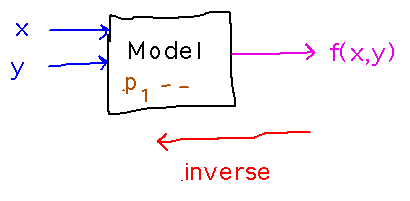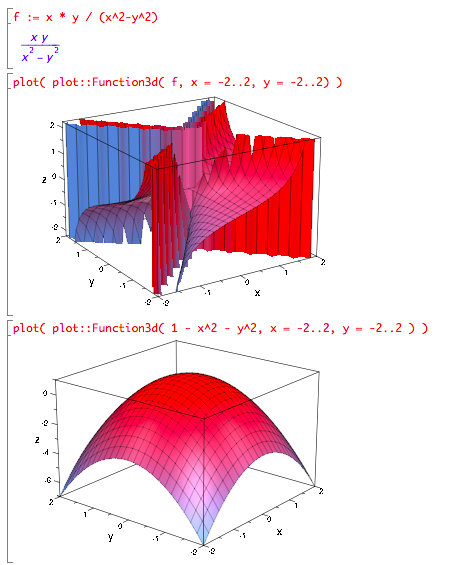Misc
Colloquium
An Overview of Inverse Problems.
Many mathematical models are essentially functions that take certain inputs and some internal parameters and produce a modeled value for something; this is a “forward” problem. But it’s also common to have a known output, e.g., observed values for a physical system, and want to know what inputs or internal parameters could have produced it; this is the “inverse” problem.

Sedar Ngoma, Geneseo.
Friday, March 2, 2:30, Newton 203.
Extra credit, as usual.
Questions?
Introduction to Multivariable Functions
Section 4.1
Real-World Examples
See if you can think of some examples of formulas or similar things you know that would count as “multivariable functions”
- From Google: temperature as a function of latitude, longitude, and altitude T(Θ, Φ, r)
- Waves (simplified form): y(x,t) = sin( x - t )
- Kinetic energy in terms of mass and speed: E(m,v) = mv2/2.
These are all “functions” in that they calculate a single number based on arguments, and they are “multivariable” because they have more than one argument variable.
Like single-variable functions, multivariable ones have domains and ranges. For example the domains of the wave and kinetic energy functions above are R2 (“R” = reals, “2” denotes pairs; extending this notation, for example, R4 would be quadruples of real numbers)
The ranges of the wave and energy functions are [-1,1] and R, respectively.
Having 2 dimensions over which arguments can vary means that domains can potentially be more subtly structured than with single-variable functions. For example, consider the function f(x,y) = xy / (x2 - y2). Its domain is most of R2, except for the two diagonal lines along which |x| = |y|:

Plotting with muPad
Use plot::Function3d to generate a plot object for a function of 2 variables. For example...

Level Curves
What is the equation of the level curve for c = 1 of E(m,v) = mv2/2?
A level curve is simply a curve in the xy plane along which a function has a constant value. In this case it’s E(m,v) = mv2/ 2 that should have a constant value of 1, so the equation for the level curve is mv2/ 2 = 1, or mv2 = 2.
This is a fairly simple concept, but widely used to describe 2-variable functions (and analogous things describe functions with more arguments, e.g., level surfaces for 3-variable functions).
Key Ideas
Functions can have more than one argument variable; most of what you know from single-variable functions scales up, although it can become more complicated as it does so.
Level curves as a way to characterize a function’s behavior.
Problem Set
See handout for details.
Next
Limits and continuity for multivariable functions.
Read section 4.2.